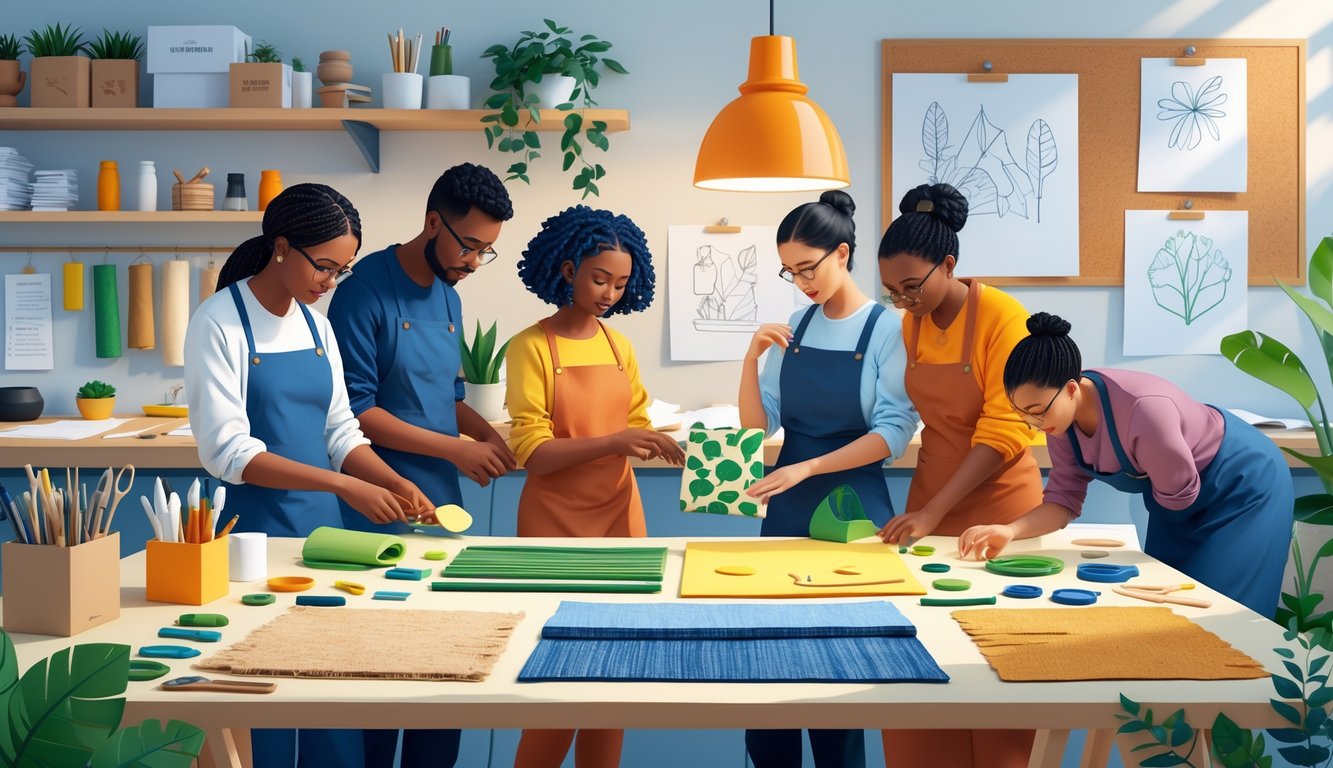
Discovering Sustainable Alternatives to Traditional Materials
Why swap out the usual? Honestly, I wouldn’t bother—except my neighbor’s compostable “plastic” cups broke immediately, but the cornstarch spoons lasted longer than the “premium” ones from the big chains. What? Sometimes these eco-friendly alternatives actually work, if you stop believing every “green” sticker and just try them.
Benefits of Eco-Friendly Alternatives
Scraping glue off my cutting mat, I realized my recycled paper roll had way fewer fumes than craft foam—plus, I didn’t feel guilty tossing scraps. My cousin (queen of upcycling) swears by pineapple leather for wallets. “Don’t iron it,” she yelled over FaceTime. Supposedly resists water, wind, and toddler spit.
But real stats? Only one USGS report (2023) even tried to compare CO₂ footprints: recycled glass tiles cut emissions by 28% compared to new ceramic. Crafts Council won’t shut up about mycelium-based boards (it’s fungus, but apparently safe—“almost impossible to set on fire,” they say). If you’re allergic to synthetic smells, mushroom leather and hemp canvas don’t have that plasticky stink, and colors don’t leach into sweaty hands. Plus, most of it can go in the recycling or compost, so there’s less landfill guilt.
Comparison With Conventional Supplies
Old-school acrylic paints and foam? Cheap because oil wells exist, I guess. That’s what I grew up with—paint stains everywhere. Then I tried clay made from industrial waste powder: just as smooth, pricier, but dries in half the time (which is great if you procrastinate).
Still, comparing performance is tricky. Recycled PET felt is firmer than the fluffy stuff at big-box stores. Pineapple leather doesn’t stretch like cheap vinyl and won’t crumble like faux suede, but it does smell faintly like fruit salad if it gets wet. Don’t pack it for a picnic—ask me how I know. If you actually want numbers, a 2024 study claims eco-friendly mat boards resist UV fading 30% better than basic cardstock. Bottom line: sometimes pricier, sometimes better, sometimes just… different. At least you won’t end up with a dozen half-used rolls of colored plastic film haunting your closet.
Biodegradable Materials Every Crafter Should Try
I mean, I keep saving all these “genius” eco-craft hacks and somehow my studio still looks like a landfill. Maybe I’m just getting cranky, but the amount of trash from regular glue and foam? It’s getting embarrassing. I started poking around for stuff that actually breaks down—like, in my lifetime, not some distant future. Turns out, the average crafter tosses, what, ten pounds of scraps a month? Yep, that’s a thing. I can’t even look at my recycling bin anymore.
Features of Biodegradable Options
Let’s just say: the hype around “bioplastics” is a mess. Not a miracle, not trash either. Some of them work for tiny projects. Mycelium (mushroom roots, basically) can be shaped—tried making a jewelry box, and it didn’t collapse after a month, so that’s a win. Bacterial cellulose? Good luck finding it at the craft store. Kombucha scoby sheets are the DIY version, but honestly, they smell like gym socks. Bamboo paper, though—composts like a champ. Unlike so-called “eco-glitter,” which I’m still finding in my laundry and, somehow, on my dog’s nose.
Oh, and biodegradable glue is a thing—natural rubber or casein-based if that means anything to you. It acts almost like Elmer’s, but don’t expect it to survive a humid summer. Fabric from old t-shirts, plant-based felt, even paper—there are swaps everywhere. I checked with an actual chemical engineer (Lydia K., Texas A&M—she’s on YouTube, look her up), and she swears these are way less toxic and don’t just end up as landfill mulch.
Limitations and Considerations
Here’s the catch: “biodegradable” doesn’t mean “throw it anywhere.” Half this stuff needs a real compost bin to disappear, not your apartment dumpster. I’ve seen so many labels claiming “home compostable” bioplastic, but they need heat and bacteria you’re not getting from a backyard pile. Mycelium? If it rains, it turns into a weird sponge. I left a planter out once and… yeah, never again.
Bacterial cellulose sheets? They split if you look at them wrong. Scissors catch, folds tear, and if you leave scraps lying around, suddenly you’re hosting a gnat convention. Bioplastic tags? Stiff, crack if you bend them, and sometimes smell like burnt marshmallows. Pro tip: always check how to toss this stuff. Most city recycling won’t touch “eco” felt—might as well be plastic beads. And those “green” packages? Sometimes it’s just regular plastic dyed beige. I mean, come on.



